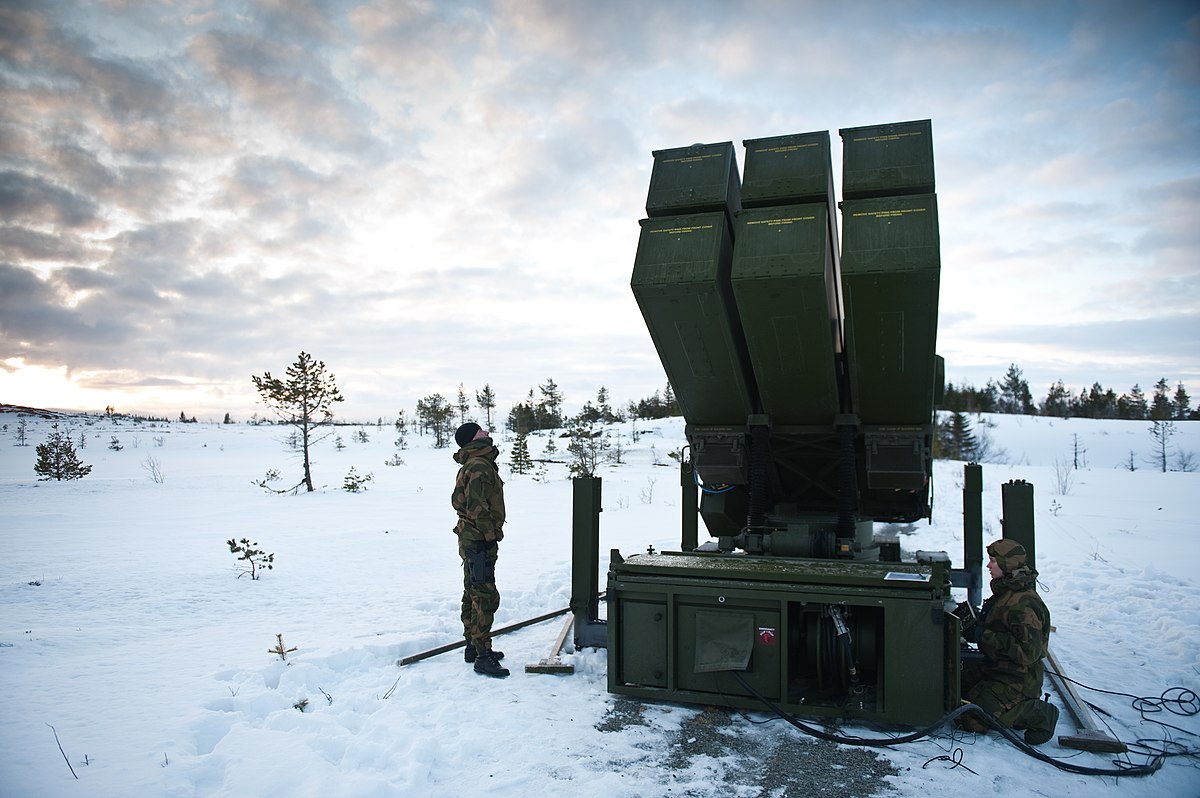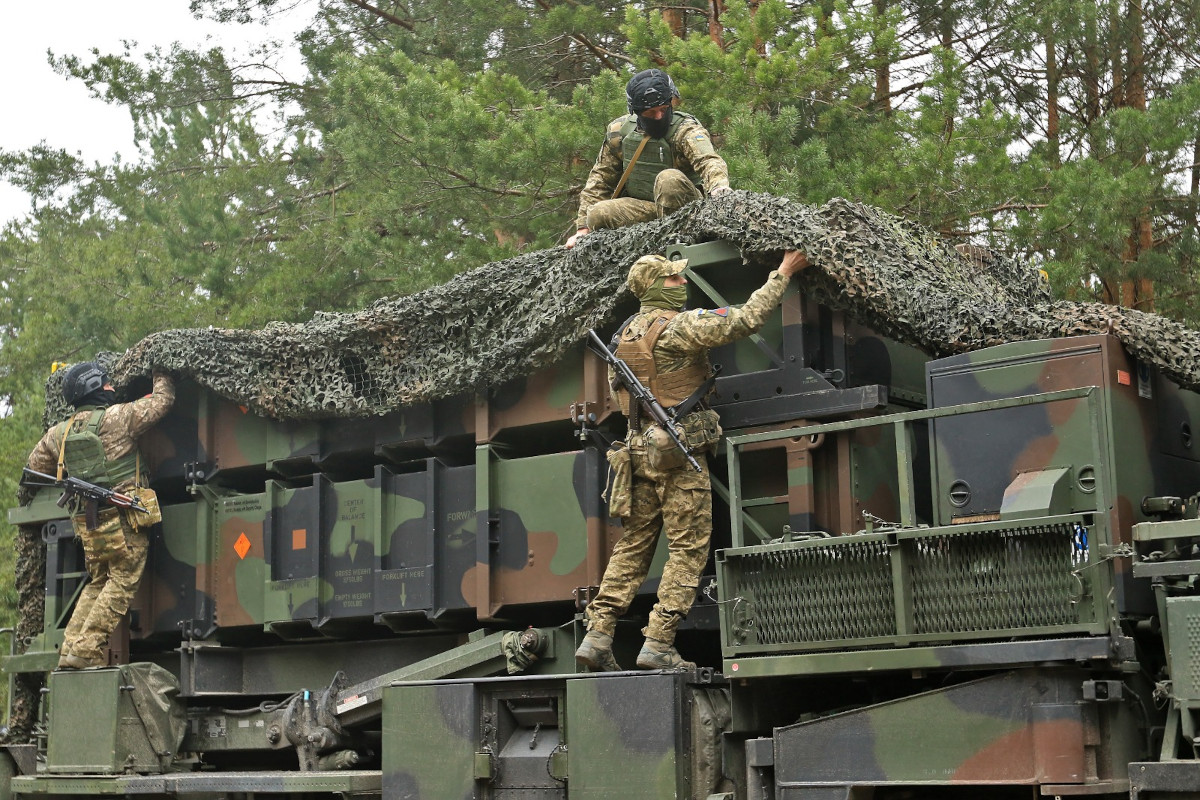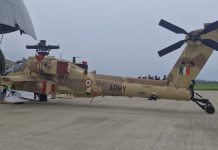The United States recently sanctioned a $2 billion arms package for Taiwan, which includes the National Advanced Surface-to-Air Missile System (NASAMS).
The approval, granted by the US State Department’s Bureau of Political-Military Affairs, marks a key step in bolstering Taiwan’s defensive capabilities as tensions with China continue to escalate.
The proposed arms package includes three National Advanced Surface-to-Air Missile Systems (NASAMS) and supporting equipment valued at up to $1.16 billion.
This NASAMS, which has proven effective in Ukraine, will be accompanied by advanced radar and missile systems to enhance the defensive network around the island nation.
The package’s key components include three AN/MPQ-64F1 Sentinel radars, 123 Advanced Medium-Range Air-to-Air Missiles-Extended Range (AMRAAM-ER), and two AMRAAM-C8 guidance sections.
Additionally, the sale provides for fire distribution centers, Canister Launcher Systems, electro-optical/infrared (EO/IR) targeting systems, and Tactical Control Centers.
These advanced systems will enable Taiwan’s military to operate NASAMS effectively, providing a critical layer of air defense coverage.
Taiwan’s Ministry of Defense has expressed optimism about the deal, noting that the NASAMS technology will “strengthen the Taiwanese army’s air defense capabilities.”
Alongside the advanced air defense system, the US has also approved the sale of AN/TPS-77 and AN/TPS-78 radar turnkey systems and associated equipment to Taiwan, valued at an estimated $828 million.
Taiwan’s presidential office thanked the United States for the green light on the arms sale. Since current President Lai Ching-te took office in May, Taiwan has ramped up its defense measures in response to escalating Chinese military activities in the region.
In a recent show of force, China conducted large-scale military exercises encircling Taiwan for the second time since Lai assumed office, describing the exercises aimed at “sealing off key ports and key areas” around Taiwan.
During these drills, Taiwan observed a record one-day deployment of 153 Chinese military aircraft, 14 naval vessels, and 12 government ships, demonstrating Beijing’s intensified pressure on Taiwan, which it claims as part of its territory.
Meanwhile, the latest US arms deal has provoked strong objections from Beijing. China’s Foreign Ministry condemned the sale as a direct challenge to its sovereignty. Chinese officials argued that the deal violates the one-China principle and undermines the three China-US joint communiqués, particularly the August 17 Communiqué of 1982.
The Strategic Role Of NASAMS
This state-of-the-art system is designed to intercept a wide range of aerial threats, including hostile aircraft, drones, and cruise missiles.
The NASAMS operates on a sophisticated network that utilizes ground-launched Air Intercept Missile (AIM)-120 Advanced Medium-Range Air-to-Air Missiles (AMRAAM) to effectively neutralize threats.
At the core of the system is its X-Band, 360-degree phased array radar, which has a target identification range of 75 kilometers (approximately 47 miles).
This advanced radar system allows NASAMS to engage up to 72 targets simultaneously in both active and passive modes. Utilizing active seeker missiles, it can intercept targets beyond visual range, showcasing its effectiveness in various combat scenarios.
The island nation first communicated its interest in acquiring the NASAMS to US officials in 2022. However, the United States was unable to proceed with the transfer of this air defense system, developed in collaboration with Norway, without obtaining the necessary permission from the Scandinavian nation and, by extension, NATO.

Experts in Taiwan view the NASAMS as a vital tool for countering aerial threats to strategic installations. Taiwan-based defense expert Mei Fu-hsing said that the NASAMS represents the first asymmetric-warfare-capable systems provided under President Joe Biden’s administration.
The NASAMS is composed of a self-contained unit that integrates a fire control center, radar, and launchers, enabling company-sized units to operate the system efficiently.
Military analysts suggest that the radar and missile systems will improve Taiwan’s ability to defend its capital, Taipei, from threats posed by fighters and drones.
Meanwhile, for long-range surveillance, the AN/TPS-77 radar system, which can detect aerial objects within a 470-kilometer range, will play a critical role in early warning capabilities.
Similarly, the AN/TPS-78 radar system, with an instrumental range of 444 kilometers, is adept at identifying low-altitude cruise missiles and drones.
Retired Taiwanese Air Force officer Chou Yu-ping highlighted the importance of integrating intelligence from the AN/MPQ-64F1 Sentinel radar systems with Taiwan’s Air Force network for a comprehensive defense strategy.
NASAMS vs. Patriot vs. THAAD
The potential integration of the National Advanced Surface-to-Air Missile System (NASAMS) into Taiwan’s defense portfolio signifies a crucial enhancement to its multi-layered air defense strategy.
With Taipei already operating the Patriot air defense system—another US-supplied weapon that has garnered recognition for its effectiveness during the ongoing conflict in Ukraine—Taiwan is taking decisive steps to bolster its defenses amid rising tensions in the region.
The United States developed a more advanced air defense system, the Terminal High Altitude Area Defense (THAAD).
While past reports suggested the potential for its deployment in Taiwan, no plans are currently in place for such an arrangement, and the United States has no intentions of selling this sophisticated system to Taiwan.
Moreover, Beijing’s sharp response to the deployment of THAAD in South Korea previously highlighted the geopolitical sensitivities surrounding advanced military systems in East Asia.

As Taiwan continues to navigate its complex relationship with China, the addition of NASAMS to its arsenal serves as a clear signal of its intent to enhance its deterrence capabilities.
NASAMS is primarily engineered for medium-range air defense, effectively targeting a diverse range of threats, including drones, tactical aircraft, and some cruise missiles.
Its flexibility allows it to defend both fixed installations and mobile units, which is vital in modern combat scenarios. With an effective operational range of up to 40 kilometers (approximately 25 miles) against aerial threats, NASAMS utilizes the AIM-120 Advanced Medium-Range Air-to-Air Missile (AMRAAM).
In contrast, the Patriot missile system offers long-range defense capabilities. It is capable of intercepting an extensive array of threats, including tactical ballistic missiles, cruise missiles, and advanced aircraft.
With a range of up to 160 kilometers (99 miles), the Patriot system’s modular design allows for various configurations, which ensures adaptability to specific mission requirements.
On the other hand, THAAD specializes in ballistic missile defense, focusing on intercepting short-, medium-, and intermediate-range ballistic missiles during their terminal phase.
By prioritizing high-altitude interception, THAAD minimizes potential collateral damage, making it an essential asset for nations facing missile threats. It can engage targets at distances ranging from 150 to 200 kilometers (93 to 124 miles), contributing to a layered defense approach against incoming threats.
The capabilities of NASAMS, Patriot, and THAAD complement each other, creating a powerful defense network. NASAMS leverages the AIM-120 AMRAAM missile, launched from ground-based platforms, and employs a networked engagement approach for efficient target tracking and management of multiple simultaneous threats.
The Patriot system utilizes various missile types, primarily the PAC-2 and PAC-3, equipped with advanced guidance and interception technologies, further enhancing its effectiveness. This integration allows Taiwan to respond dynamically to different aerial threats, thereby improving its overall operational readiness.
Meanwhile, THAAD relies on hit-to-kill technology for intercepting ballistic missiles, using kinetic energy to neutralize incoming threats. Its advanced radar systems ensure precise tracking and targeting.
- Contact the author at ashishmichel(at)gmail.com
- Follow EurAsian Times on Google News




